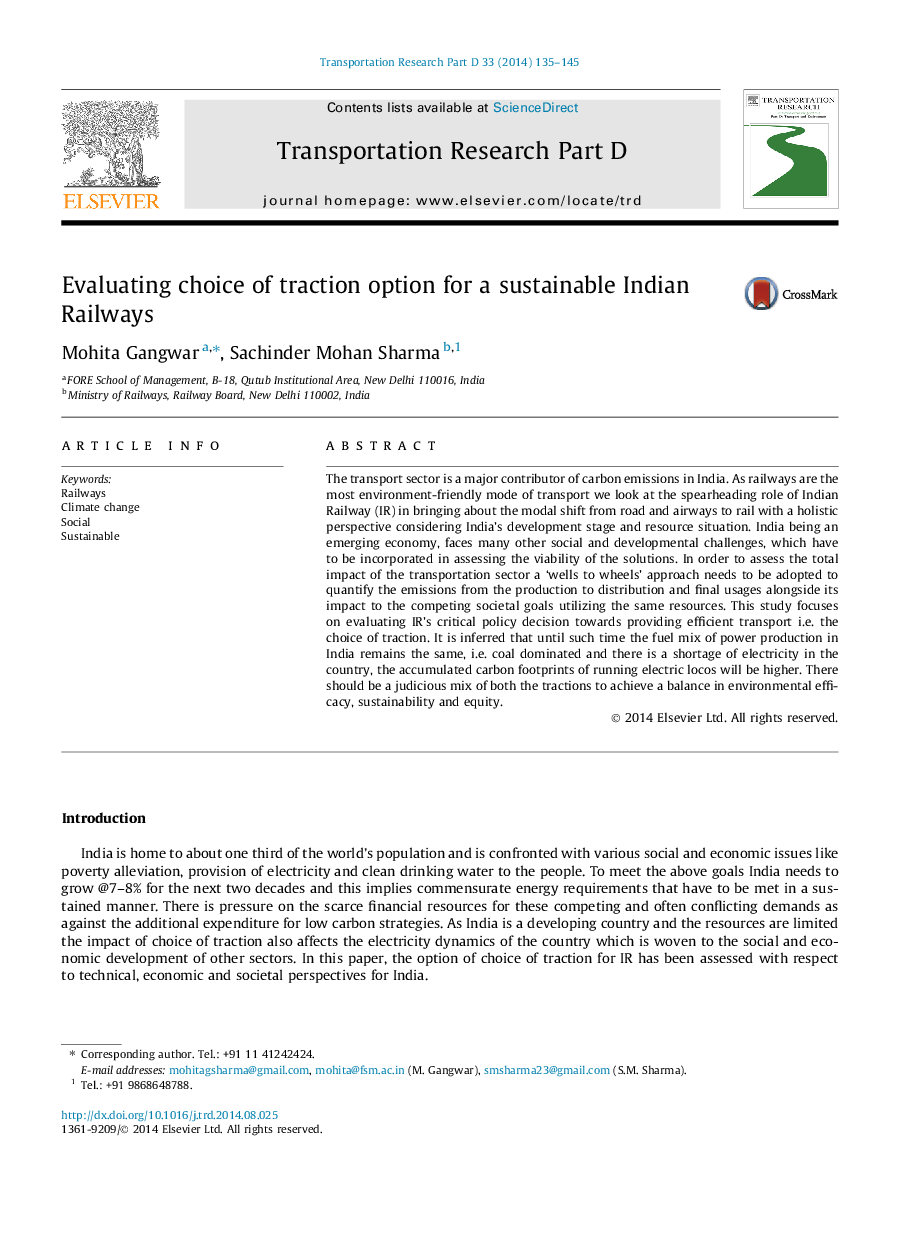| کد مقاله | کد نشریه | سال انتشار | مقاله انگلیسی | نسخه تمام متن |
|---|---|---|---|---|
| 1065699 | 1485890 | 2014 | 11 صفحه PDF | دانلود رایگان |
• Evaluates Indian Railway’s policy decision of choice of traction from sustainability lens.
• Reviews the carbon footprints of running electric locos given the Indian electricity scenario.
• Incorporates the societal impact on transportation traction decision.
The transport sector is a major contributor of carbon emissions in India. As railways are the most environment-friendly mode of transport we look at the spearheading role of Indian Railway (IR) in bringing about the modal shift from road and airways to rail with a holistic perspective considering India’s development stage and resource situation. India being an emerging economy, faces many other social and developmental challenges, which have to be incorporated in assessing the viability of the solutions. In order to assess the total impact of the transportation sector a ‘wells to wheels’ approach needs to be adopted to quantify the emissions from the production to distribution and final usages alongside its impact to the competing societal goals utilizing the same resources. This study focuses on evaluating IR’s critical policy decision towards providing efficient transport i.e. the choice of traction. It is inferred that until such time the fuel mix of power production in India remains the same, i.e. coal dominated and there is a shortage of electricity in the country, the accumulated carbon footprints of running electric locos will be higher. There should be a judicious mix of both the tractions to achieve a balance in environmental efficacy, sustainability and equity.
Journal: Transportation Research Part D: Transport and Environment - Volume 33, December 2014, Pages 135–145
